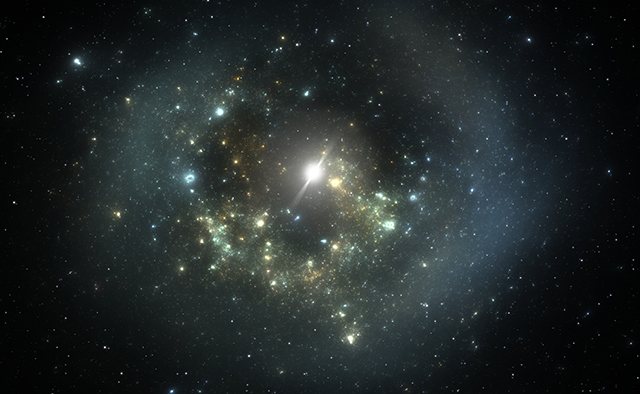 Parler
Parler Gab
Gab
- Researchers may have found the first indirect evidence of dark matter.
- A mysterious gamma-ray glow at the Milky Way's center is the key signal.
- New simulations show dark matter's distribution matches the observed gamma rays.
- This makes dark matter a leading explanation for the mysterious energy.
- Future telescopes will now work to confirm this groundbreaking discovery.
A new map of the invisible
When the researchers compared their simulated maps of dark matter to the actual gamma-ray maps from the Fermi telescope, they found a remarkable match. The predicted distribution and signal of gamma rays from colliding dark matter aligned with what was actually observed in the real world. This alignment addresses a major historical challenge for the dark matter explanation. Lead author Dr. Moorits Muru explained the breakthrough simply: "One of the main challenges for the dark matter explanation was that its predicted distribution didn't match the observed gamma-ray excess. In our new study, we found that this mismatch came from a simplifying assumption." The old models assumed dark matter was perfectly spherical around the galactic center. The new, more realistic simulations show it is actually flattened. This crucial adjustment made all the difference, creating a model that finally fits the real-world data. Professor Silk emphasized the significance, stating, "Our key new result is that dark matter fits the gamma-ray data at least as well as the rival neutron star hypothesis. We have increased the odds that dark matter has been indirectly detected." This is not yet a definitive confirmation, but it is a monumental step forward in a decades-long quest.The search for a smoking gun
The scientific community remains cautiously optimistic. The study concludes that both the dark matter and the millisecond pulsar theories are equally likely based on current data. To settle the debate, researchers are looking to the future. The soon-to-be-constructed Cherenkov Telescope Array in Chile, which will be the world's most powerful gamma-ray telescope, is poised to provide the answers. Its superior sensitivity may be able to distinguish the subtle differences between gamma rays produced by dark matter and those from neutron stars. Alternatively, the telescope could scan nearby dwarf galaxies, which are believed to be heavily dominated by dark matter. Finding the same gamma-ray signal in those locations would strongly corroborate the hypothesis. "Detecting the same signal Fermi found for the galactic centre would confirm the dark matter hypothesis," says Professor Silk, who calls this his "great hope" for a conclusive answer. This pursuit strikes at the heart of our understanding of reality. For too long, the powers that be in science have been forced to admit that most of the universe is made of something they cannot see or explain. This new evidence represents a powerful challenge to that ignorance. It is a testament to relentless inquiry and a refusal to accept that the true nature of the cosmos must remain forever hidden. The mysterious glow at the center of our galaxy is more than just light; it is a beacon, potentially guiding us toward one of the greatest discoveries in human history and finally illuminating the dark heart of the universe. Sources for this article include: DailyMail.co.uk Reuters.com Phys.orgThe science behind olive oil’s top 10 health benefits
By News Editors // Share
Early peanut exposure cuts allergy rates by 40%, study confirms
By Willow Tohi // Share
Finnish study finds MENTAL HEALTH DISORDERS may spread among teen peer groups
By Evangelyn Rodriguez // Share
Toxic legacy: How wildfires poison drinking water for years
By Willow Tohi // Share
New research reveals strength, not thinness, is the true key to longevity
By Ava Grace // Share
Stronger muscles shield your organs from obesity damage, reveals major study
By Cassie B. // Share
Governments continue to obscure COVID-19 vaccine data amid rising concerns over excess deaths
By patricklewis // Share
Tech giant Microsoft backs EXTINCTION with its support of carbon capture programs
By ramontomeydw // Share
Germany to resume arms exports to Israel despite repeated ceasefire violations
By isabelle // Share










